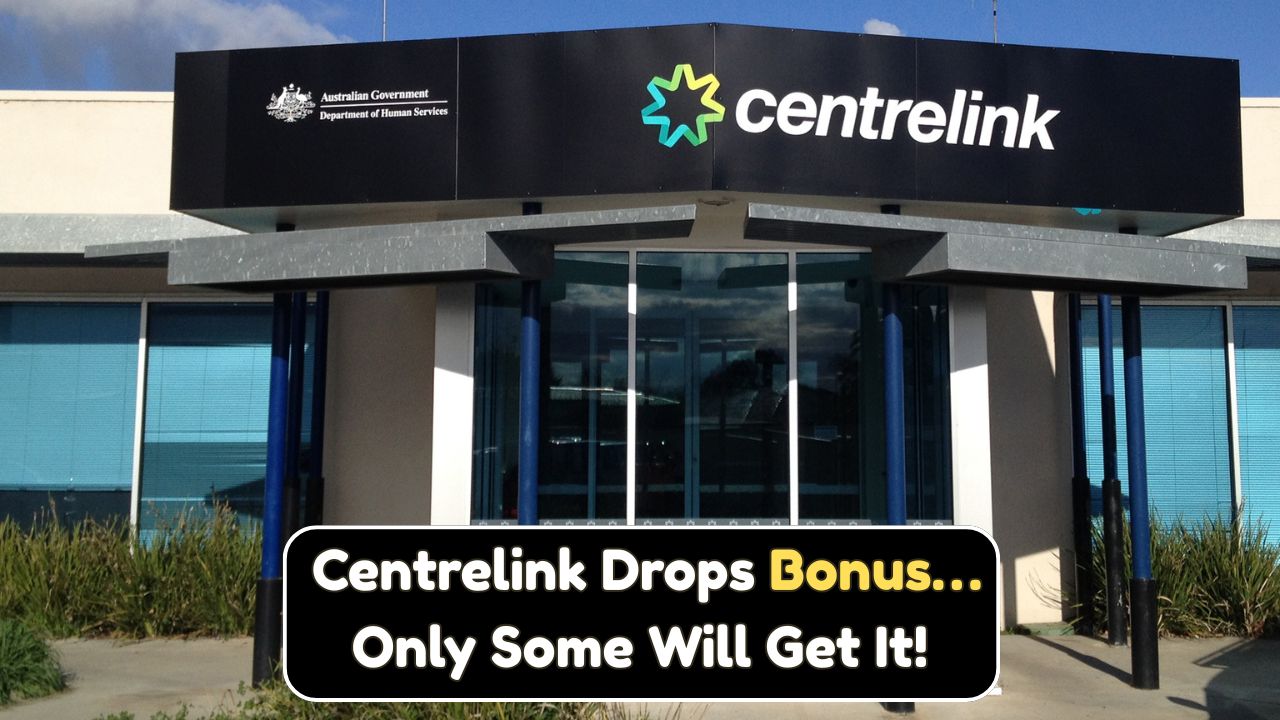New Superannuation Withdrawal Rules : From August 1, 2025, significant changes to Australia’s superannuation system will take effect, impacting both retirees and workers approaching retirement. The government has introduced an overhaul of superannuation rules aimed at boosting retirement savings, improving fund accessibility, and ensuring a more sustainable income stream for future retirees. Central to these changes is an increase in the Superannuation Guarantee (SG) rate and revised conditions for accessing retirement funds.
These updates are part of Australia’s long-term financial strategy to help citizens retire with more dignity, independence, and adequate income. As retirement living costs rise and Australians live longer, the need to evolve the super system has become more urgent. Here’s a detailed breakdown of what’s changing, who it affects, and what steps you should take now.
Why the Superannuation Rules Are Being Updated
The updates to superannuation rules are being introduced to reflect current economic realities, longevity trends, and growing pressure on public pensions. With more people retiring and living longer, relying solely on the Age Pension is no longer a sustainable option for many. The government’s aim is to strengthen the role of super as a primary retirement income source.
These changes also aim to close loopholes in fund accessibility, ensure more consistent employer contributions, and modernise the system for a growing digital economy.
Key Objectives of the New Super Rules:
- Increase retirement savings through higher employer contributions
- Simplify access to super for retirees and low-income earners
- Adjust preservation age timelines for better long-term planning
- Reduce early withdrawals that compromise future retirement income
- Create a more stable retirement income stream for Australians
Super Guarantee Rate Increase – What It Means for Employees and Employers
One of the headline changes is the increase in the Superannuation Guarantee (SG) rate. From August 1, 2025, employers are required to contribute 12% of an employee’s ordinary time earnings to their super fund, up from the current 11%. This mandatory rise will have significant long-term benefits for working Australians, helping to grow their retirement nest egg faster.
Super Guarantee Increase Timeline:
| Financial Year | SG Rate (Old) | SG Rate (New) | Applicable From | Applies To Employees Earning |
|---|---|---|---|---|
| 2023–2024 | 11% | 11% | Already in effect | $450/month and above |
| 2024–2025 | 11% | 11.5% | July 1, 2024 | All eligible employees |
| 2025–2026 | 11.5% | 12% | August 1, 2025 | All eligible employees |
| 2026–2027 onward | 12% | 12% | Continued annually | Universal |
Employers must update payroll systems and ensure that eligible workers are receiving the correct SG contributions. Failure to comply could result in penalties and back payments.
State-Wise Impact Table – Superannuation Changes from August 2025
From August 1, 2025, Australia’s superannuation system is getting major updates. The Super Guarantee (SG) rate will rise from 11.5% to 12%, boosting future retirement savings for millions of Australians. Withdrawal rules for retirees remain stable, but high-balance super holders (over $3 million) will now face additional taxes on earnings. Paid parental leave will also include super contributions, giving working parents a financial boost.
| State/Territory | Estimated Affected Workers | Super Guarantee Rate (Now → New) | Change in Withdrawal Rules | Key Local Impact |
|---|---|---|---|---|
| New South Wales (NSW) | 2.9 Million | 11.5% → 12% | Access age stays 60 | Boost to employer contributions in urban sectors |
| Victoria (VIC) | 2.5 Million | 11.5% → 12% | No change in drawdown rules | Surge in contributions in manufacturing & services |
| Queensland (QLD) | 2.2 Million | 11.5% → 12% | Tax change affects balances > $3M | Rural areas benefit from super on parental leave |
| Western Australia (WA) | 1.3 Million | 11.5% → 12% | No structural change in withdrawal access | Strong mining & public sector savings growth |
| South Australia (SA) | 850,000 | 11.5% → 12% | Preservation age remains unchanged | Higher voluntary super contributions expected |
| Tasmania (TAS) | 280,000 | 11.5% → 12% | Access rules stable | More flexibility for older self-employed workers |
| ACT | 250,000 | 11.5% → 12% | No early access changes | High-income public sector hit by $3M cap tax |
| Northern Territory (NT) | 210,000 | 11.5% → 12% | Standard withdrawal rules apply | Indigenous and regional workers gain via SG rise |
Changes to Accessing Retirement Funds – What Retirees Need to Know
Another major reform involves how and when individuals can access their super funds. From August 1, 2025, the government is adjusting the preservation age and introducing new withdrawal guidelines to prevent early depletion of retirement savings.
New Access Rules Overview:
| Access Condition | Old Rule | New Rule (from August 1, 2025) |
|---|---|---|
| Preservation Age | 60 (if born before 1964) | Increases to 61 for those born 1964–1965 |
| Lump Sum Withdrawals | Full access at preservation age | Limited to phased withdrawals over time |
| Transition to Retirement (TTR) Access | 4% minimum drawdown | Increased to 5% annually |
| Re-contribution Cap | $110,000 annually | Increased to $150,000 (encourages top-ups) |
| Downsizer Contribution Age | 60 | Lowered to 55 for early planning |
| Early Access (Hardship, Medical) | Still allowed under strict rules | Additional documentation now required |
| SMSF Pension Phase Rules | Flexible income options | New minimum drawdown benchmarks introduced |
These adjustments are designed to promote smarter retirement income management and encourage Australians to preserve their super for longer-term use rather than rapid spending early in retirement.
How These Changes Affect Different Age Groups
The impact of these reforms will vary depending on the individual’s age, employment status, and proximity to retirement. Here’s a breakdown of how different groups will be affected:
Impact Across Age Groups:
| Age Group | Key Impact of Rule Change | Suggested Action |
|---|---|---|
| Under 30 | Higher SG contributions will boost long-term savings | Start contributing voluntarily for more gains |
| 30–45 | SG increase + preservation age shifts | Review long-term retirement plans |
| 46–59 | Nearing retirement – access rules may apply | Reevaluate transition strategy |
| 60–64 | Access age adjusted – phased withdrawals enforced | Consider re-contributions or downsizer options |
| 65+ | Affected by drawdown rules and SMSF phase updates | Talk to a financial planner for income plans |
| Casual workers | SG applies regardless of hours worked | Ensure employer compliance |
| Self-employed | Still voluntary, but re-contribution benefits apply | Consider setting up regular contributions |
For most people, these changes are positive and will increase total retirement income. However, planning is essential to ensure smooth transitions.
Strategies for Maximising Retirement Benefits Under the New Rules
Adapting to these changes doesn’t have to be stressful. With careful financial planning, you can take full advantage of the updates and secure a more comfortable retirement.
Recommended Strategies:
- Review your super fund performance annually and consider switching if fees are too high
- Make voluntary contributions, especially now with increased caps and tax offsets
- Use the downsizer contribution if you’re 55 or older and selling your home
- Reinvest unused retirement savings into your fund under the higher cap
- Adjust your retirement timeline if the preservation age affects your access
- Work with a licensed financial adviser to create a tailored drawdown strategy
Being proactive now will prevent stress later and ensure you’re positioned to make the most of your superannuation.
How to Check Your Super Status and Compliance
It’s important to stay informed and monitor your super account regularly to ensure contributions are being made correctly and you’re eligible under the new guidelines.
Steps to Stay On Track:
- Log into your MyGov account and link to the ATO to view your super fund
- Check your SG contributions to ensure your employer is compliant
- Review your fund’s investment performance and fees
- Contact your super fund’s support team for any fund-specific questions
- Sign up for alerts or newsletters from Services Australia or ATO
Keeping records up to date will help you respond quickly to any issues and make informed decisions.
FAQs For New Superannuation Withdrawal Rules
Q1: Does the SG rate increase apply to all employees?
Yes, all eligible employees—including part-time and casual workers—will receive the increased 12% SG contribution from August 1, 2025.
Q2: Can I still access my super at 60?
If you were born before 1 July 1964, yes. Otherwise, the preservation age shifts to 61 under the new rules.
Q3: Are voluntary contributions affected by the new rules?
Yes, the annual non-concessional cap has increased from $110,000 to $150,000, making it more attractive to top up your super.
Q4: Will early access for hardship still be allowed?
Yes, but stricter documentation and medical evidence will now be required to process early access claims.
Q5: What happens to my SMSF pension strategy under the new rules?
Minimum drawdown percentages have changed. Speak with your fund manager to adjust your income plan accordingly.
Q6: Do self-employed individuals benefit from the changes?
While the SG isn’t mandatory for self-employed individuals, they can now benefit from increased contribution caps and downsizer rules.
Q7: How can I get help understanding these changes?
You can consult a financial adviser, visit the official ATO website, or contact your super fund for personalised guidance.
The August 1, 2025, superannuation reforms represent one of the most significant updates to Australia’s retirement savings system in years. By increasing employer contributions and reshaping access conditions, the government aims to deliver stronger retirement outcomes for current and future generations.
Whether you’re just starting your career, planning for retirement, or already drawing from your super, now is the time to reassess your strategy. Take control of your retirement future by staying informed, making smart contributions, and consulting experts when needed.











